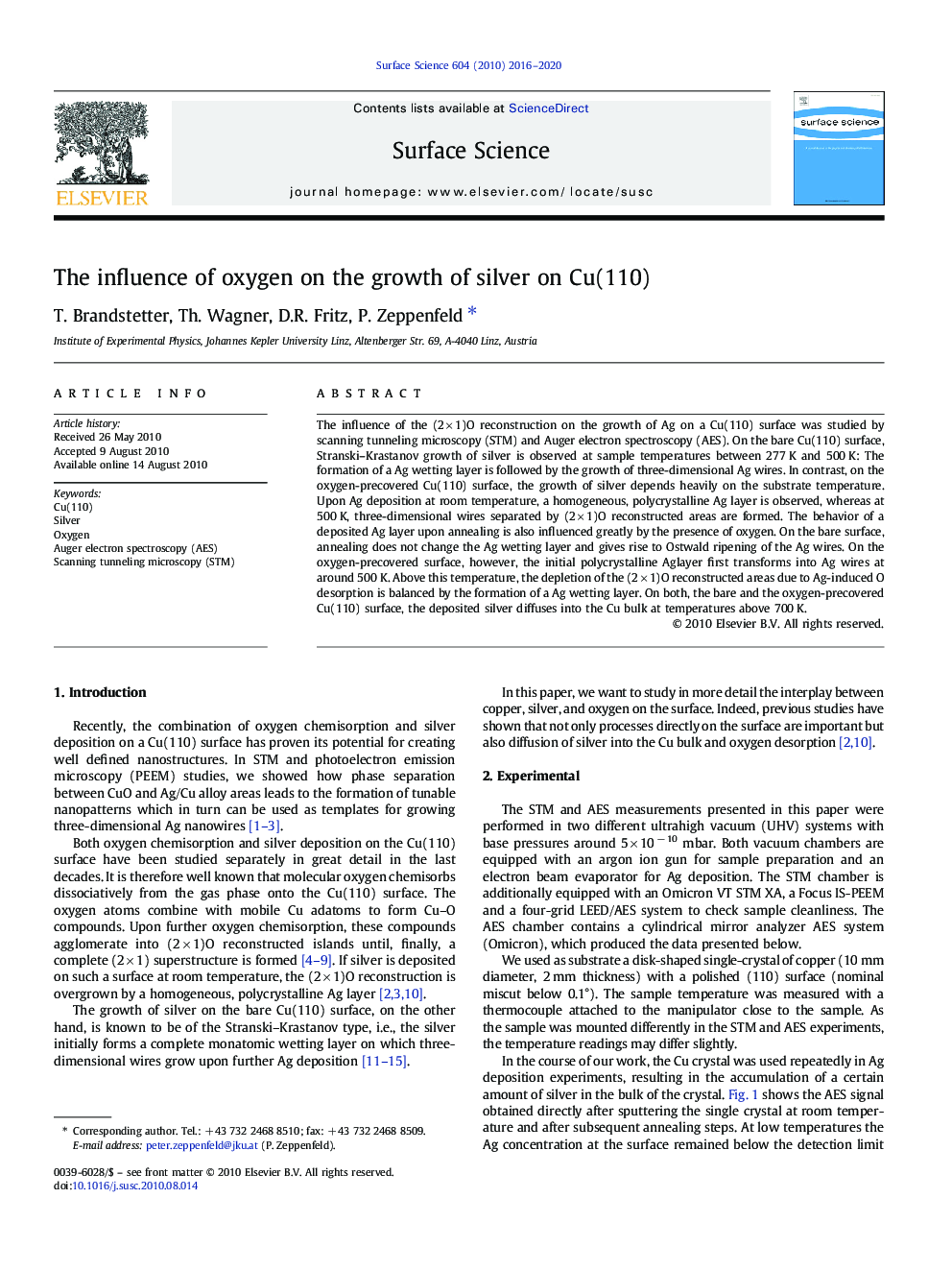| Article ID | Journal | Published Year | Pages | File Type |
|---|---|---|---|---|
| 5423513 | Surface Science | 2016 | 5 Pages |
Abstract
The influence of the (2Â ÃÂ 1)O reconstruction on the growth of Ag on a Cu(110) surface was studied by scanning tunneling microscopy (STM) and Auger electron spectroscopy (AES). On the bare Cu(110) surface, Stranski-Krastanov growth of silver is observed at sample temperatures between 277Â K and 500Â K: The formation of a Ag wetting layer is followed by the growth of three-dimensional Ag wires. In contrast, on the oxygen-precovered Cu(110) surface, the growth of silver depends heavily on the substrate temperature. Upon Ag deposition at room temperature, a homogeneous, polycrystalline Ag layer is observed, whereas at 500Â K, three-dimensional wires separated by (2Â ÃÂ 1)O reconstructed areas are formed. The behavior of a deposited Ag layer upon annealing is also influenced greatly by the presence of oxygen. On the bare surface, annealing does not change the Ag wetting layer and gives rise to Ostwald ripening of the Ag wires. On the oxygen-precovered surface, however, the initial polycrystalline Aglayer first transforms into Ag wires at around 500Â K. Above this temperature, the depletion of the (2Â ÃÂ 1)O reconstructed areas due to Ag-induced O desorption is balanced by the formation of a Ag wetting layer. On both, the bare and the oxygen-precovered Cu(110) surface, the deposited silver diffuses into the Cu bulk at temperatures above 700Â K.
Related Topics
Physical Sciences and Engineering
Chemistry
Physical and Theoretical Chemistry
Authors
T. Brandstetter, Th. Wagner, D.R. Fritz, P. Zeppenfeld,
